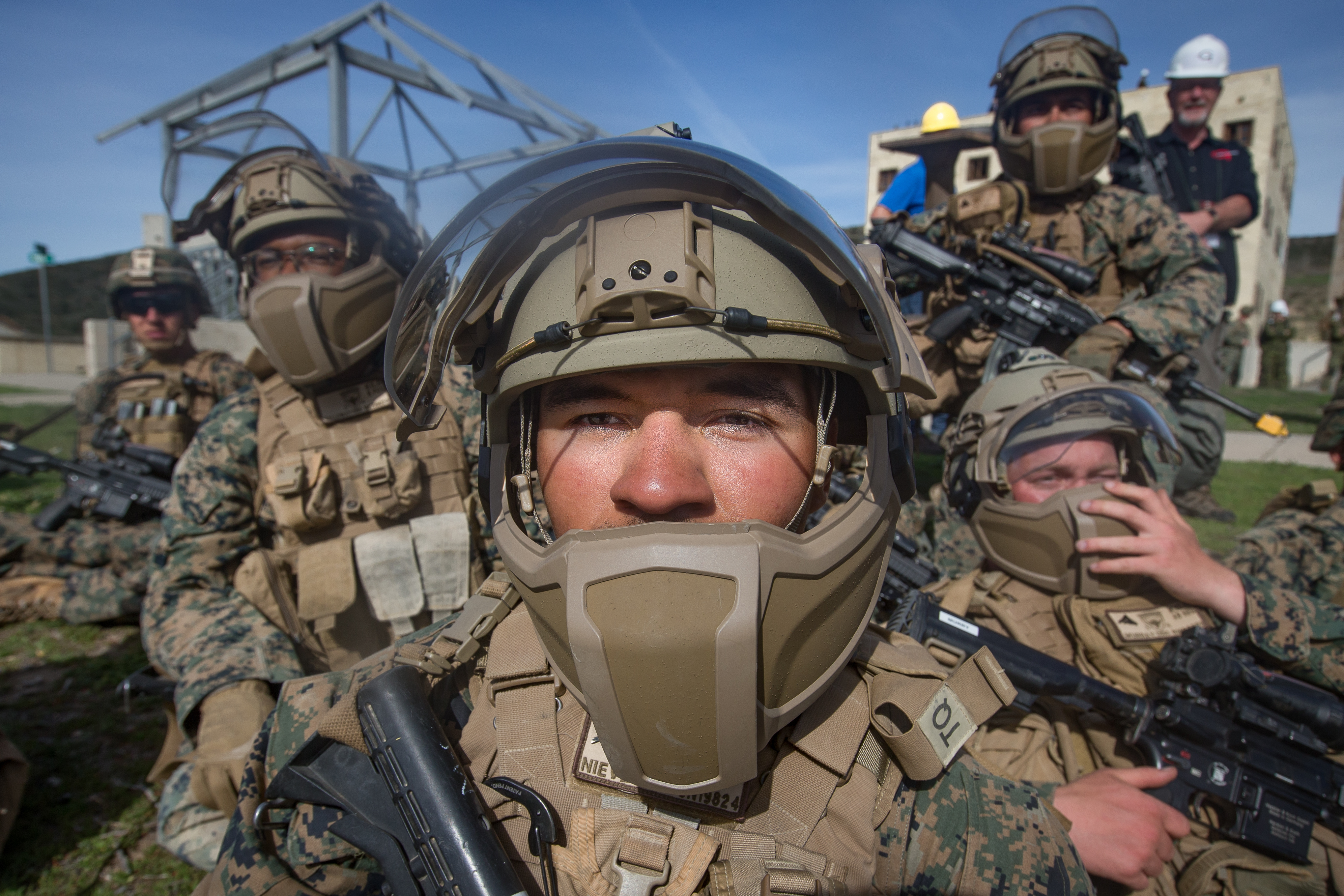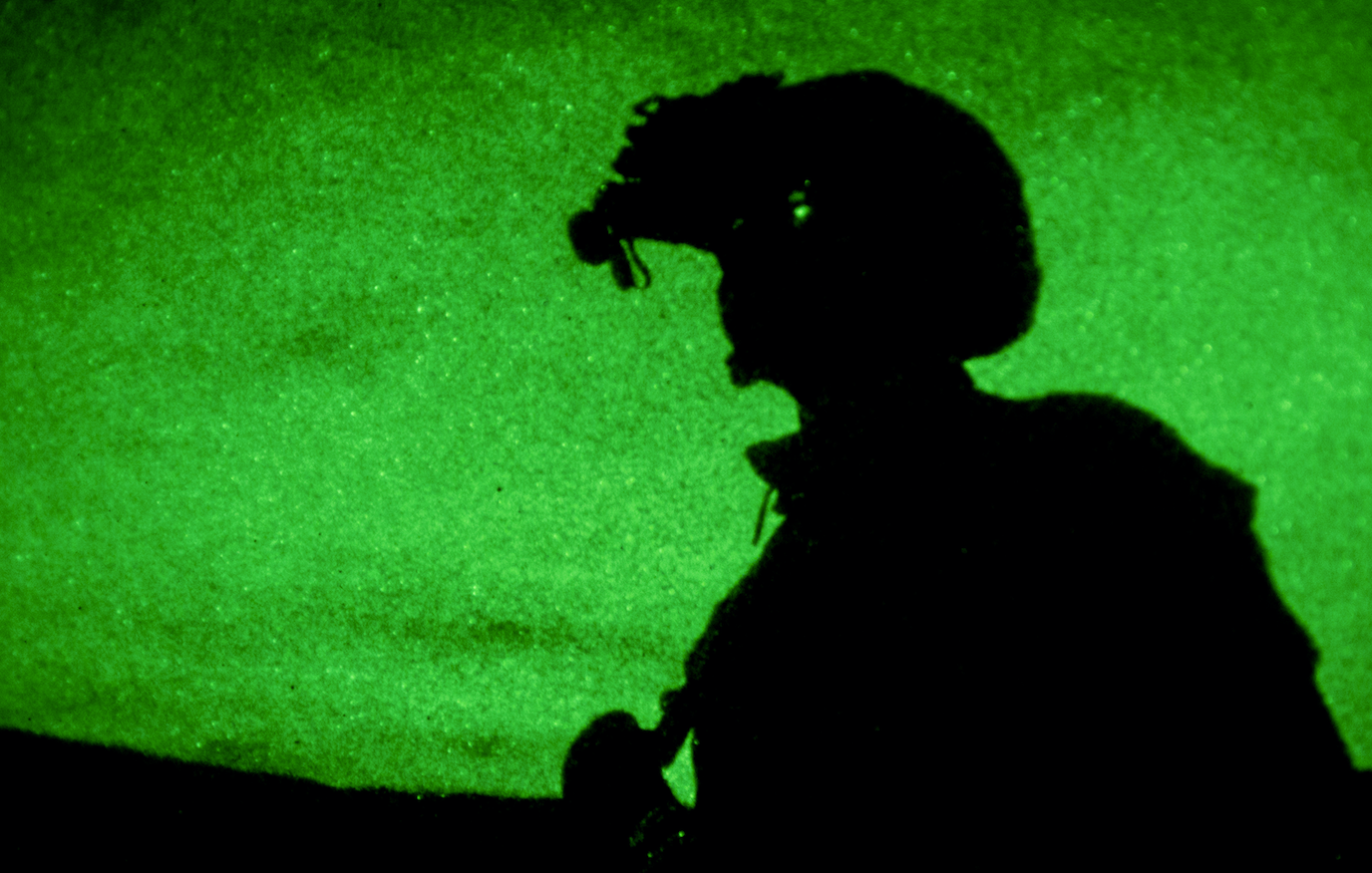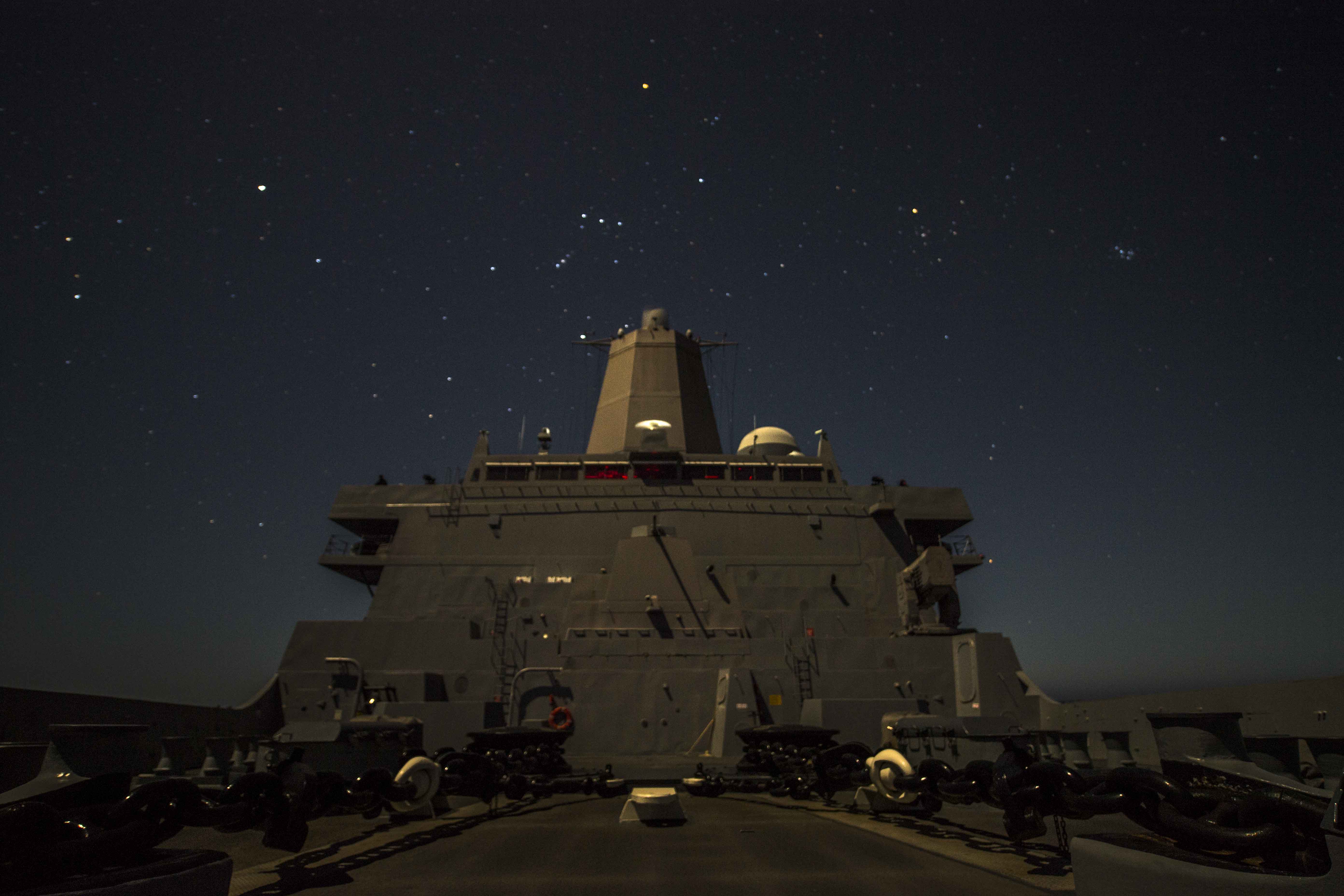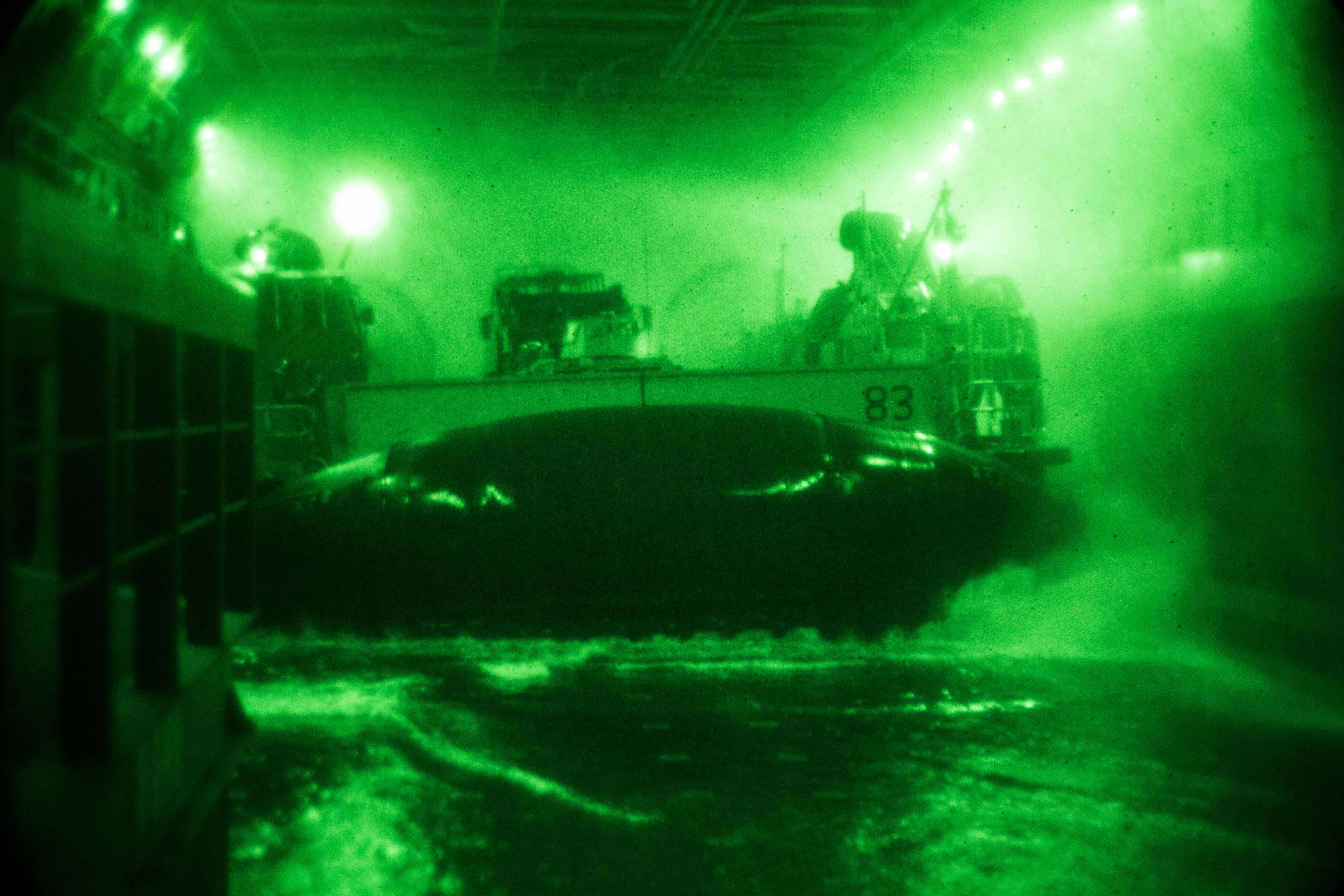
ARLINGTON, Va. – The Marine Corps is preparing for a high-end distributed fight inside island chains in the Pacific, and the service is pushing the Navy to invest in additional weapons and systems for amphibious ships to support this kind of battle in a contested environment.
The Marine Corps is further developing concepts like the Expeditionary Advance Base Operations and Littoral Operations in a Contested Environment, but there are some materiel changes the Navy will need to make, such as upgunning amphibious ships and connecting amphibs into the surface combatants’ and aircraft carriers’ tactical grid, leaders said last week at the Surface Navy Association’s annual national symposium.
Maj. Gen. David Coffman, director of expeditionary operations (OPNAV N95), set the scene, describing a large-scale formation Navy ships and Marine landing forces beyond what the services typically rehearse today.
“That level of integrated naval operations could be needed to take an island somewhere – natural or manmade. But it certainly will be required when a great power competition pits a whale against an elephant, or maybe two elephants – a global maritime power, that’s us, against a regional land power hegemon with home-field advantage. In that long war, maritime superiority is necessary but not sufficient for the whale to beat the elephant,” Coffman said, noting the Marines were readying themselves to conduct day-to-day competition, deterrence against malign actions, and, if necessary, major combat operations in this high-end environment.
“So what we need to do is reinvigorate naval maneuver warfare, linking sea control and power projection in order to win current and future fights.”

In this type of warfare, Coffman argued while speaking to reporters after his speech, a three-ship Amphibious Ready Group and the accompanying Marine Expeditionary Unit will not be sufficient. No longer can “three amphibious ships and a commodore and a colonel can move around and get it done.” Rather, he said, the Navy and Marine Corps need to become more proficient in operating larger Expeditionary Strike Groups with Marine Expeditionary Brigades that can sustain themselves for longer fights, and in fighting alongside carrier strike groups as part of a large Expeditionary Strike Force.
Lt. Gen. Brian Beaudreault, deputy commandant of the Marine Corps for plans, policies and operations, expressed a similar sentiment during his speech at the SNA event, noting that the ARG of today will not be sufficient for a future fight.
In his mind, the solution is either alternate ship formations that bring in destroyers or cruisers to help protect the amphibious ships and their embarked Marines, or upgrades to the amphibs themselves to allow for organic self-protection.

Beaudreault noted the recent Littoral Combat Group 1 deployment that paired a San Antonio-class amphibious transport dock (LPD-17) with an Arleigh Burke-class destroyer (DDG-51) as one way of keeping Marines safe as they transit through island chains, setting up advance bases for small pockets of Marines to fight from in a dispersed manner.
But, he told USNI News during a question and answer session, what happens during a major conflict, when merchant ships need to be escorted through the theater to help resupply those Marines distributed over a wide area? How many Navy surface combatants will be tied up escorting supply ships, and how many will be left over to escort amphibious warships?
“That’s why every ship has to be a warship that can defend itself, have an offensive striking capability and be able to deal with the threats that are coming in, be it a cyber threat – so it needs a good network – or whether it’s a kinetic threat in the form of a missile that’s coming at it,” Beaudreault said.
“We’re not totally naked in that regard, but we need a lot of improvement. We need a whole lot of improvement. … Now, what can we do with undersea, unmanned undersea capability, that can also provide protection for an ARG that’s different than having a cruiser or destroyer on the surface accompanying that same ARG? Those are areas for exploration, I think.”
The general also called for upgrades to the amphibious ships the Navy fields today and will be building in the coming years.
“Our amphibious warships need to defend against air, surface, subsurface, cyber and information attack. In absence of organic ship-to-ship and ship-to-shore strike weapons, they must rely on support from other combatants. … To increase the lethality and readiness of our amphibious fleet, the naval force must upgrade [command and control] suites, introduce the vertical launch system for organic air defense.”

Capt. Brian Metcalf, LPD program manager within the Program Executive Office for Ships, said during the conference that the upcoming Flight II LPDs set to be built in the 2020s will not have VLS cells – though there’s still space to add them in if requirements change and if money is available to add the missile launchers – but he also noted that there are other ways to up-gun the amphibious ships.
“To be able to launch a missile, you do not have to have a vertical launching system,” he said.
“So we’ve encouraged [the Marine Corps] to find a requirement – what are we trying to defend against, or what kind of operational parameters or scenarios are we trying to build the ship to meet – and we’ll give them many options on how they can slice that. And vertical launch will be one of them, but it’s not the only option.”
Beaudreault in his speech noted that the Marine Corps and Defense Department don’t have a great track record of predicting exactly what their next battle will look like, but he said there are some threats the Marines are certain to face in the future and must be prepared for. The proliferation of missile technology, the impact of cyber warfare, operating in degraded communications and jammed environments, and the threat of space-based systems are “things we’re going to have to contend with regardless of who the adversary is,” he said.
The Marines will also have to operate in a disaggregated manner to complicate enemy targeting, but that will stress the Marines’ ability to command and control, provide air and surface lift, resupply the force, provide casualty evacuation and more.
Though in many ways this scenario – small pockets of Marines operating on different islands in a hostile environment, to help the Navy gain sea control and to take additional territory – is nothing like the recent ARG/MEU deployments that are focused on humanitarian assistance and partner-building activities, or like the post-9/11 land wars, Beaudreault said he’s confident today’s young officers are gaining skills that will be applicable in the future fight.
First, he said, over the past 18 years of land wars, the Marine Corps has never missed a planned ARG/MEU deployment, meaning the service as an institution has retained its amphibious skills, even if most of the force was focused ashore. He noted that he hopes to see the Navy and Marine Corps build on this knowledge by moving beyond ARG/MEU-based exercises and practicing ESG/MEB operations or even Expeditionary Strike Force operations during exercises like Trident Juncture and Talisman Saber.

Second, Beaudreault said, the Marines who have been fighting in Afghanistan, Iraq and Syria – who have been conducting signals intelligence, human intelligence, targeting and logistics work in small distributed pockets in the desert – “these are the kind of Marines we want as captains, majors, organizing and setting up those EABOs of the future. Taking lessons that they’re learning on land and applying it maybe to another chunk of land that’s a temporary lodgment to set up an EABO. But they’ll be comfortable operating in that environment with not a lot of supervision, using their ingenuity and creativity to put a hurtin’ on the enemy. Where they’re shooting artillery rounds today, we’ll be shooting long-range, we’ll be shooting loitering munitions, swarming technologies; that may be the difference. The tools at hand to go a distance will, I think, be the difference in the future.”





